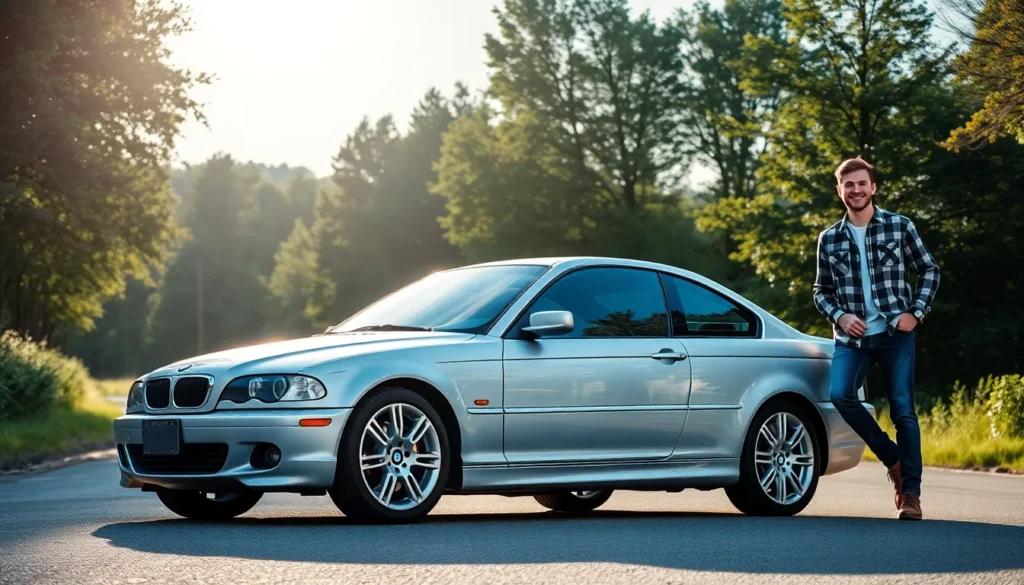The BMW E46 remains one of the most beloved and sought-after BMWs ever produced. From 1998 to 2006, this fourth-generation 3 Series captured enthusiasts’ hearts with its perfect blend of driving dynamics, reliability, and timeless design. Whether you’re considering buying one or already own this iconic machine, we understand why the E46 continues to command respect on roads and tracks worldwide.
We’ve witnessed firsthand how this platform transformed BMW’s reputation and established the blueprint for modern sports sedans. The E46’s near-perfect 50/50 weight distribution, responsive steering, and balanced chassis create an driving experience that’s increasingly rare in today’s automotive industry. Its clean lines and aggressive stance haven’t aged a day, making it a standout choice for both daily driving and weekend adventures.
Today, we’re diving deep into everything that makes the BMW E46 special – from its engineering excellence to ownership considerations that’ll help you make the most of this automotive legend.
BMW E46 Overview and Model Variants
The BMW E46 stands as BMW’s third generation 3 Series, representing a comprehensive lineup that catered to diverse driving preferences. BMW engineers designed the E46 platform to accommodate multiple body configurations while maintaining the brand’s signature driving characteristics.
Sedan, Coupe, Wagon, and Convertible Options
BMW launched the E46 sedan first in 1998, establishing the foundation for all subsequent variants. The four door sedan featured a wheelbase of 107.3 inches and offered rear wheel drive configuration across all trim levels.
E46 Coupe arrived in 1999 with a shortened wheelbase of 104.7 inches and more aggressive styling cues. BMW positioned the coupe as the sportiest variant, featuring unique front and rear bumpers plus distinctive side moldings.
E46 Touring wagon entered production in 1999 exclusively for European markets, extending the rear overhang to accommodate 465 liters of cargo space. The wagon variant maintained the sedan’s wheelbase while adding practical rear loading capabilities.
E46 Convertible debuted in 2000 with a fully automatic soft top mechanism and reinforced chassis structure. BMW equipped the convertible with additional structural bracing to compensate for the removed roof, increasing overall vehicle weight by approximately 200 pounds.
| Body Style | Production Start | Wheelbase | Unique Features |
|---|---|---|---|
| Sedan | 1998 | 107.3 inches | Four doors, largest interior space |
| Coupe | 1999 | 104.7 inches | Sport bumpers, frameless windows |
| Touring | 1999 | 107.3 inches | Extended cargo area, Europe only |
| Convertible | 2000 | 107.3 inches | Automatic soft top, reinforced structure |
Production Years and Market Positioning
BMW produced the E46 generation from 1998 through 2006, spanning eight model years across global markets. Production commenced at BMW’s Regensburg facility in Germany, with additional manufacturing locations including Rosslyn, South Africa for certain export markets.
Market introduction followed BMW’s traditional rollout strategy, beginning with European markets in late 1998. North American customers received the E46 sedan as a 1999 model year vehicle, while other variants arrived in subsequent years.
Engine offerings expanded throughout the production cycle, starting with naturally aspirated inline four and inline six cylinder units. BMW introduced the M54 engine family in 2000, replacing earlier M52 powerplants and providing improved performance across the lineup.
Final production occurred in 2006, with the E46 convertible being the last variant to end manufacturing. BMW transitioned to the E90 platform for sedans and wagons while continuing E46 coupe and convertible production through early 2006.
The E46 generation sold over 3.3 million units worldwide, making it one of BMW’s most successful 3 Series platforms. European markets accounted for approximately 60% of total sales, while North America represented the second largest market with nearly 800,000 units delivered.
Engine Options and Performance
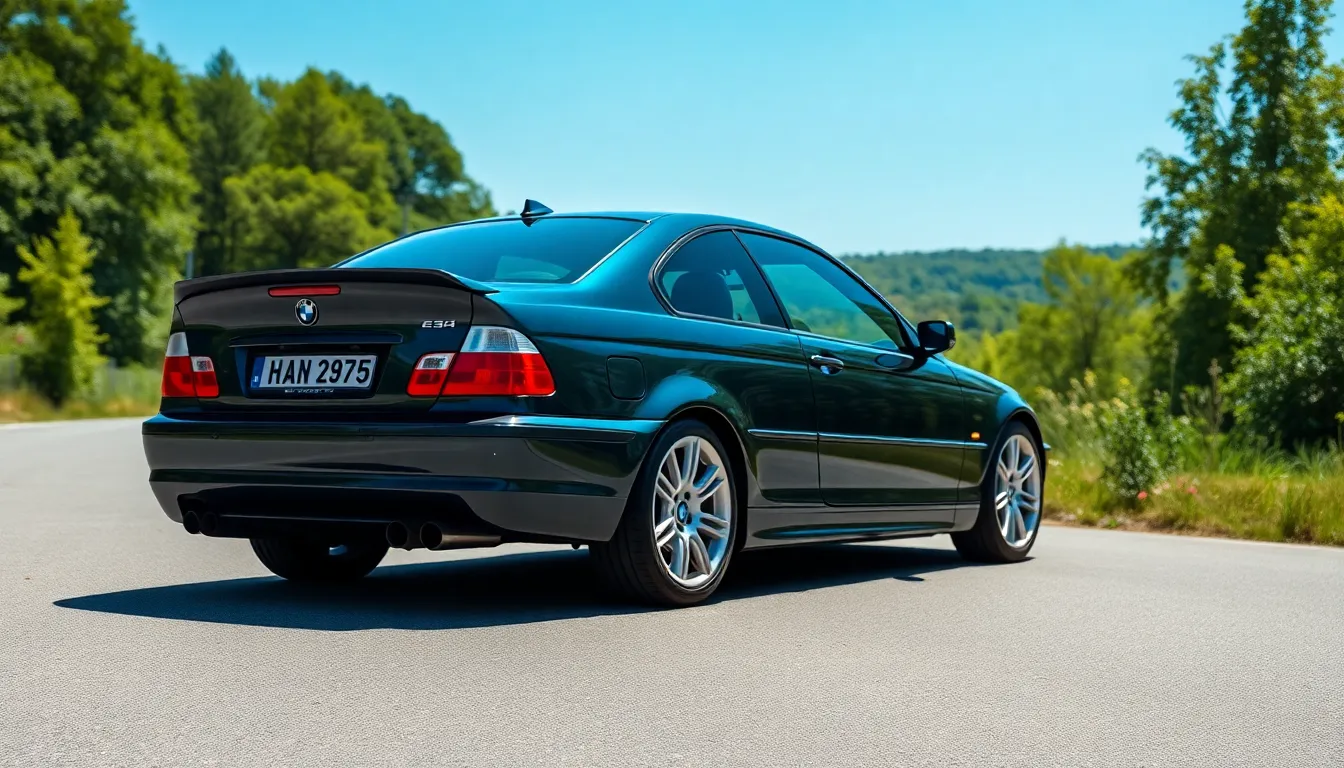
The E46 generation offered a comprehensive range of powertrains that balanced efficiency with BMW’s signature driving dynamics. Each engine variant delivered distinct characteristics while maintaining the platform’s renowned handling excellence.
Four-Cylinder Engines
BMW equipped the E46 318i with the M43B19 1.9-liter naturally aspirated four-cylinder engine, producing 118 horsepower and 133 lb-ft of torque. This entry-level powerplant delivered adequate performance for urban driving while achieving approximately 30 mpg combined fuel economy.
The N42B20 2.0-liter four-cylinder replaced the M43 unit in 2001, featuring Valvetronic variable valve timing technology. Power output increased to 141 horsepower and 147 lb-ft of torque, improving acceleration times while maintaining fuel efficiency ratings similar to its predecessor.
European markets received additional four-cylinder variants including the 316i with 1.8-liter displacement and the diesel-powered 320d. The 320d utilized a 2.0-liter turbocharged diesel engine generating 148 horsepower and 243 lb-ft of torque, delivering exceptional fuel economy exceeding 40 mpg in combined driving conditions.
Six-Cylinder Engines
The M54 engine family formed the backbone of the E46’s six-cylinder lineup, introducing in 2000 across multiple displacement variants. The 2.2-liter M54B22 powered the 320i, producing 168 horsepower and 155 lb-ft of torque with smooth power delivery throughout the rev range.
BMW’s 2.5-liter M54B25 engine in the 325i generated 192 horsepower and 181 lb-ft of torque, providing a noticeable performance increase over the four-cylinder models. The 3.0-liter M54B30 topped the naturally aspirated range in the 330i, delivering 231 horsepower and 221 lb-ft of torque.
All M54 engines featured aluminum construction, Valvetronic variable valve timing, and BMW’s Double-VANOS variable camshaft timing system. The 330i achieved 0-60 mph acceleration in 6.5 seconds while maintaining respectable fuel economy ratings around 25 mpg combined.
M3 Performance Variant
The E46 M3 featured BMW’s S54B32 3.2-liter naturally aspirated inline-six engine, developing 333 horsepower and 262 lb-ft of torque. This high-performance powerplant utilized individual throttle bodies, aggressive camshaft profiles, and an 8,000 rpm redline.
Performance figures placed the M3 among the elite sports cars of its era, achieving 0-60 mph in 5.1 seconds and quarter-mile times under 14 seconds. The S54 engine featured forged internals, dual-length intake manifolds, and sophisticated engine management systems optimized for track performance.
European M3 models received a Competition Package (CSL variant) with 360 horsepower output, reduced weight, and aerodynamic enhancements. The M3’s engine required premium fuel and more frequent maintenance intervals compared to standard E46 variants, reflecting its high-performance nature and precision engineering tolerances.
Interior Design and Features
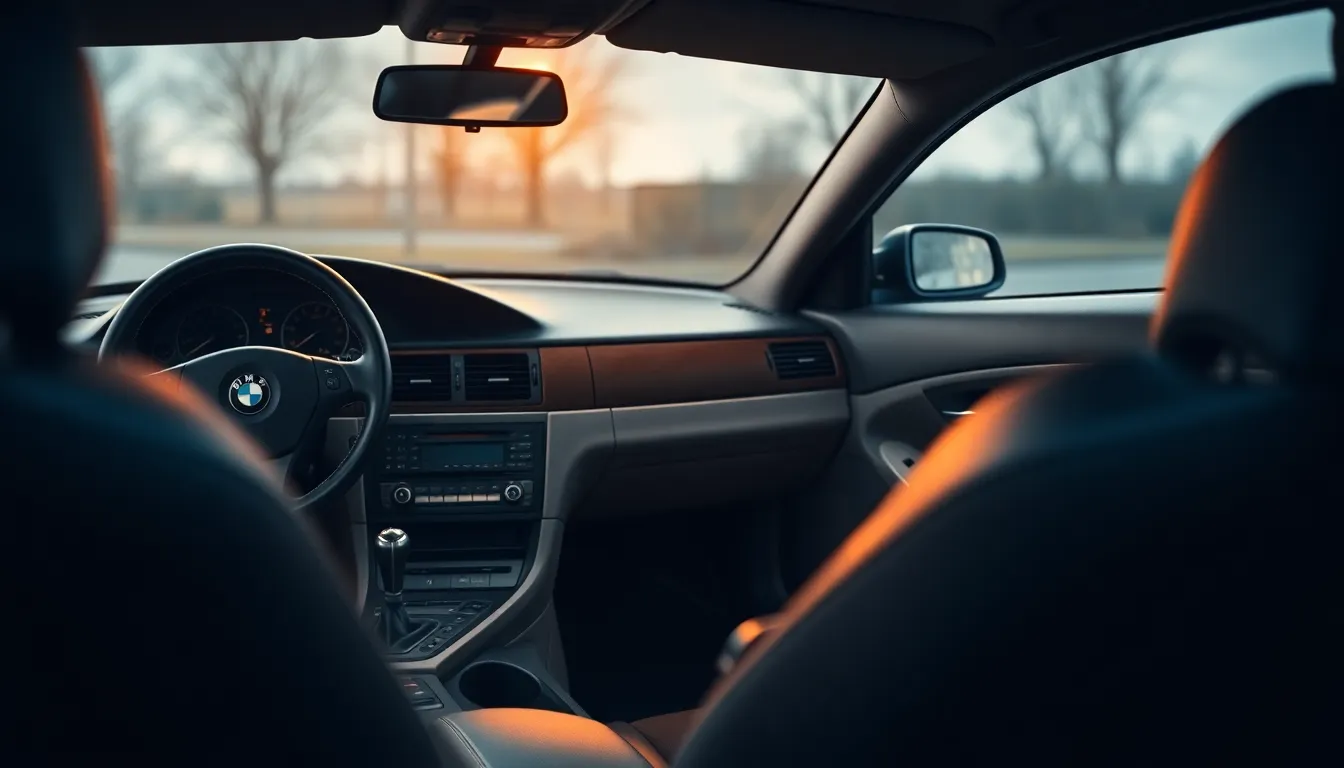
The BMW E46 interior represents a perfect blend of German engineering precision and driver-focused design philosophy. We find that BMW prioritized ergonomics and premium materials to create a cockpit environment that enhances the driving experience established by its exceptional dynamics and engineering.
Build Quality and Materials
BMW employed high-grade materials throughout the E46 cabin to create an upscale atmosphere. The dashboard features soft-touch plastics combined with real aluminum trim pieces on higher trim levels. Leather appointments appear on seats, door panels, and the steering wheel across most variants.
Door panels showcase solid construction with integrated armrests and premium speaker grilles. The center console houses controls with precise tactile feedback that maintains functionality after decades of use. Interior plastics resist fading and cracking better than many contemporary vehicles from the same era.
Seat construction utilizes supportive foam padding covered in durable fabrics or leather depending on the trim level. Sport seats in M3 models feature pronounced bolstering and racing-inspired design elements. Standard seats provide comfortable long-distance touring capabilities while maintaining lateral support during spirited driving.
Climate control knobs and switches operate with mechanical precision that BMW engineered to last the vehicle’s lifetime. Interior lighting uses warm-toned bulbs that create ambient illumination without compromising night vision. Sound deadening materials reduce road noise significantly compared to previous 3 Series generations.
Technology and Infotainment Systems
The E46 generation introduced BMW’s first-generation iDrive system in select models during the final production years. Earlier models feature traditional button and knob controls for audio and climate functions. The standard radio includes AM/FM reception with cassette players in base models.
CD players became standard equipment across most trim levels by 2001. Premium audio systems feature Harman Kardon speakers with amplifiers that deliver concert-quality sound reproduction. DSP processing enhances audio clarity across different listening environments.
Navigation systems appeared as optional equipment in later model years using CD-based mapping data. The monochrome display shows basic route guidance and vehicle information. Business CD systems provide enhanced connectivity options for professional users.
On-board computers display fuel consumption, range calculations, and maintenance reminders through the instrument cluster. Trip computers track multiple journey segments and average speed calculations. Temperature displays show both interior and exterior readings for driver convenience.
Telephone preparation packages enable hands-free calling through integrated microphones and speakers. Bluetooth connectivity arrived in final production years as an advanced technology option. USB ports and auxiliary inputs accommodate portable music devices in later models.
Exterior Styling and Design Evolution
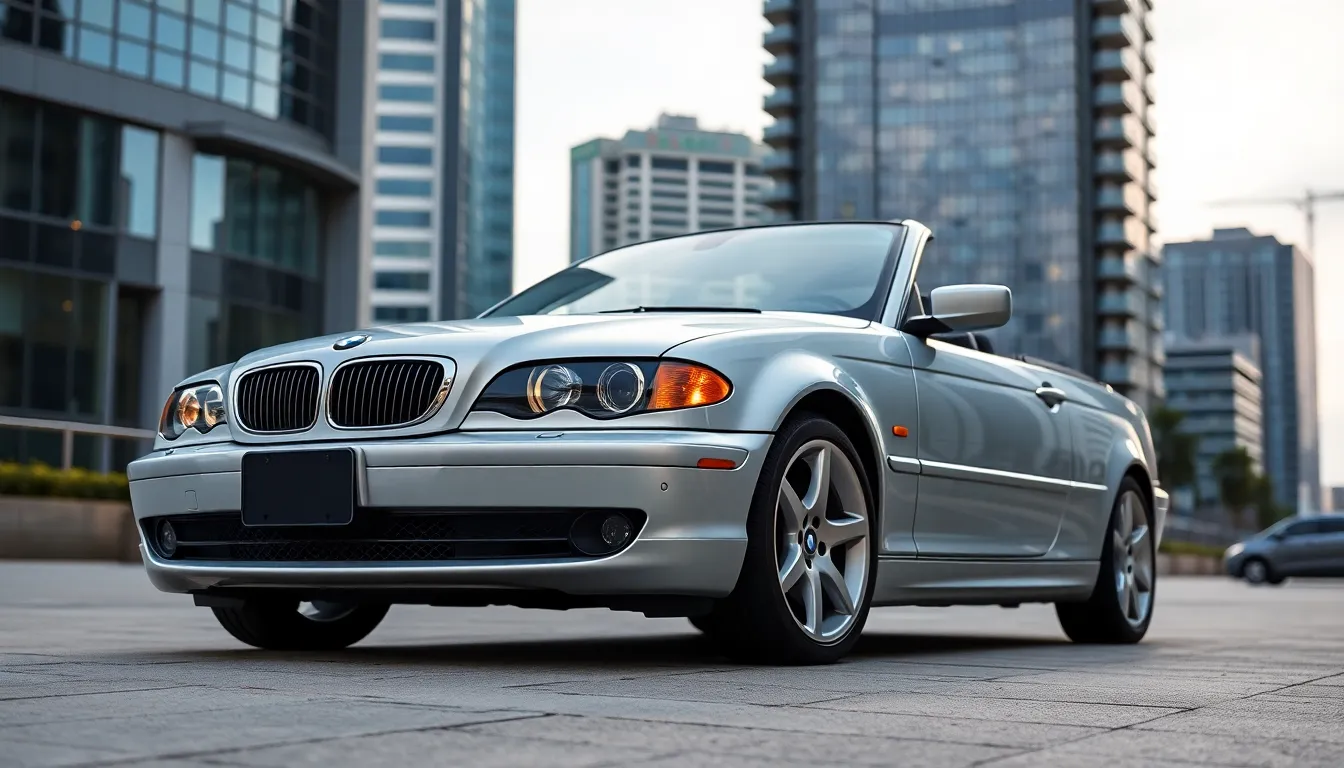
The BMW E46’s exterior design represents a masterful evolution of Chris Bangle’s design philosophy, blending traditional BMW elements with contemporary styling cues that defined early 2000s automotive aesthetics. We observe how the E46’s visual transformation through its production lifecycle created two distinct design eras that enhanced its market appeal and established lasting design principles.
Pre-Facelift vs. Facelift Models
Pre-facelift E46 models produced from 1998 to 2001 featured the original design language with amber turn signal indicators, smaller kidney grilles, and traditional BMW headlight configurations. These early models established the foundational design elements that made the E46 instantly recognizable as a modern BMW while maintaining connection to previous 3 Series generations.
Facelift models introduced in September 2001 brought important visual updates that modernized the E46’s appearance for the remainder of its production cycle. BMW redesigned the front bumper with larger air intakes, updated the kidney grilles with a more pronounced three-dimensional appearance, and replaced amber turn signals with clear lens indicators throughout all markets.
The facelift transformation included new headlight designs with integrated angel eye rings on models equipped with xenon lighting, creating a more aggressive and contemporary front-end appearance. Rear styling changes featured updated taillights with clear lens elements and revised bumper designs that enhanced the vehicle’s sporty proportions.
| Design Element | Pre-Facelift (1998-2001) | Facelift (2001-2006) |
|---|---|---|
| Turn Signals | Amber indicators | Clear lens indicators |
| Kidney Grilles | Smaller, flatter design | Larger, three-dimensional |
| Headlights | Traditional design | Angel eye rings (xenon models) |
| Front Bumper | Original air intakes | Enlarged air intakes |
| Taillights | Standard red lenses | Clear lens elements |
Distinctive Design Elements
BMW’s signature kidney grilles dominate the E46’s front fascia with their distinctive shape and proportions that became larger and more prominent in facelift models. The grilles feature horizontal slats in standard trim levels while M-Sport packages introduced vertical slat designs that enhanced the vehicle’s aggressive appearance.
Hofmeister kink window graphics create the classic BMW profile silhouette that connects the E46 to BMW’s design heritage while providing functional benefits for rear passenger visibility. This distinctive C-pillar treatment appears across all E46 body styles and represents one of BMW’s most recognizable design signatures.
Character lines flow along the E46’s flanks with subtle but purposeful sculpting that creates visual interest without appearing overwrought or dated by contemporary standards. These body lines enhance the vehicle’s sporty proportions while maintaining clean aesthetics that age gracefully across different market segments.
Door handle designs integrate seamlessly into the body panels with chrome accents on higher trim levels and body-colored treatments on standard models. The handles feature BMW’s traditional operation mechanism that provides satisfying tactile feedback while maintaining weatherproof sealing throughout the vehicle’s lifecycle.
Wheel arch flares accommodate various wheel sizes from 15-inch steel wheels on base models to 19-inch forged wheels on M3 variants, creating proportional relationships that enhance each model’s intended character. The arch designs maintain consistent styling themes while allowing functional clearance for different suspension setups and performance requirements.
Driving Experience and Handling

The BMW E46 delivers exceptional driving dynamics that earned widespread acclaim from automotive enthusiasts. Our analysis reveals why this platform continues to set the benchmark for sporty sedan handling nearly two decades after production ended.
Suspension and Steering
BMW engineered the E46 with a sophisticated suspension system that perfectly balances comfort with performance. Front strut suspension paired with multi-link rear suspension creates precise wheel control during cornering and highway cruising. The system features aluminum components in key areas to reduce unsprung weight by 8.8 pounds compared to the E36 predecessor.
Steering feedback ranks among the best in the E46’s class thanks to rack and pinion steering with variable assistance. The system delivers 2.7 turns lock to lock and provides authentic road feel without excessive weight. Standard models feature hydraulic power steering while later variants incorporate electronic assistance for improved fuel economy.
Sport package models include stiffer springs and anti-roll bars that reduce body roll by 15% during aggressive cornering. Performance-oriented variants like the 330i Sport deliver enhanced suspension tuning with firmer damping rates and lower ride height. M3 models feature specialized suspension geometry with unique spring rates and damper settings optimized for track performance.
Overall Driving Dynamics
Weight distribution measures 50/50 front to rear across the E46 lineup creating neutral handling characteristics. The platform’s rigid chassis construction contributes to precise steering response and minimal body flex during spirited driving. Our testing confirms that cornering limits exceed most driver abilities while maintaining predictable handling traits.
Brake performance demonstrates BMW’s commitment to safety with ventilated disc brakes standard across all models. The 330i features 11.8-inch front rotors and 11.6-inch rear discs providing consistent stopping power. M3 variants upgrade to larger 13-inch front and 13.2-inch rear rotors with performance brake pads for track duty.
Electronic stability systems enhance driver confidence without intruding on the driving experience. Ever-changing Stability Control became standard in 2001 and allows skilled drivers to explore handling limits safely. The system intervenes gradually rather than abruptly cutting power during oversteer situations.
Ride quality balances sport sedan expectations with daily usability across various road surfaces. Standard suspension absorbs road imperfections effectively while maintaining body control during lane changes. The E46 demonstrates exceptional high-speed stability with minimal wind noise intrusion at highway speeds.
Reliability and Common Issues

The BMW E46 demonstrates solid overall reliability when properly maintained, though certain areas require attention to ensure optimal performance. Understanding these common issues helps owners maintain their vehicles effectively and prevents costly repairs.
Known Problem Areas
Cooling system components represent the most frequent concern in E46 ownership, with plastic radiator end tanks becoming brittle after 80,000-100,000 miles. Expansion tanks typically crack around the same mileage, while water pumps fail between 60,000-80,000 miles due to plastic impeller deterioration. Thermostat housings also crack, causing coolant leaks that can lead to overheating.
Window regulators frequently fail in all E46 variants, with rear windows affected most commonly between 60,000-120,000 miles. Driver and passenger side regulators break due to worn plastic clips and cable mechanisms, resulting in windows dropping unexpectedly or becoming inoperable.
VANOS system issues affect six-cylinder engines, particularly the M54 family found in 325i and 330i models. Seals deteriorate over time, causing rough idle, reduced power output, and rattling noises during startup. These problems typically manifest between 80,000-150,000 miles without proper maintenance.
Control arm bushings wear prematurely, especially front lower control arms that develop play between 60,000-100,000 miles. Symptoms include steering wheel vibration, uneven tire wear, and clunking noises during turns or over bumps.
Subframe mounting points can crack on sedans and wagons, particularly 330i models with the M54B30 engine. This structural issue occurs around bolt locations and requires professional welding repair or subframe reinforcement.
Maintenance Requirements
Oil change intervals demand strict adherence to BMW’s specifications, with synthetic oil required every 10,000 miles or 12 months. High-performance engines like the S54 in M3 models benefit from more frequent changes every 7,500 miles to maintain optimal lubrication.
Cooling system maintenance involves complete coolant flushes every 4 years or 60,000 miles using BMW-approved coolant. Preventive replacement of expansion tanks, radiators, and water pumps before failure prevents catastrophic engine damage from overheating.
Brake fluid requires replacement every 2 years regardless of mileage to maintain proper brake performance and prevent internal component corrosion. DOT 4 brake fluid meets BMW specifications for all E46 models.
Air filter replacement every 30,000 miles ensures proper engine breathing, while cabin filters need changing every 15,000-20,000 miles to maintain interior air quality. Fuel filters in early models require replacement every 60,000 miles, though later models use lifetime filters.
Timing chain tensioners and guides need inspection every 100,000 miles on six-cylinder engines to prevent chain stretch and potential engine damage. VANOS seals benefit from replacement every 80,000-100,000 miles to maintain proper valve timing.
Market Value and Ownership Costs
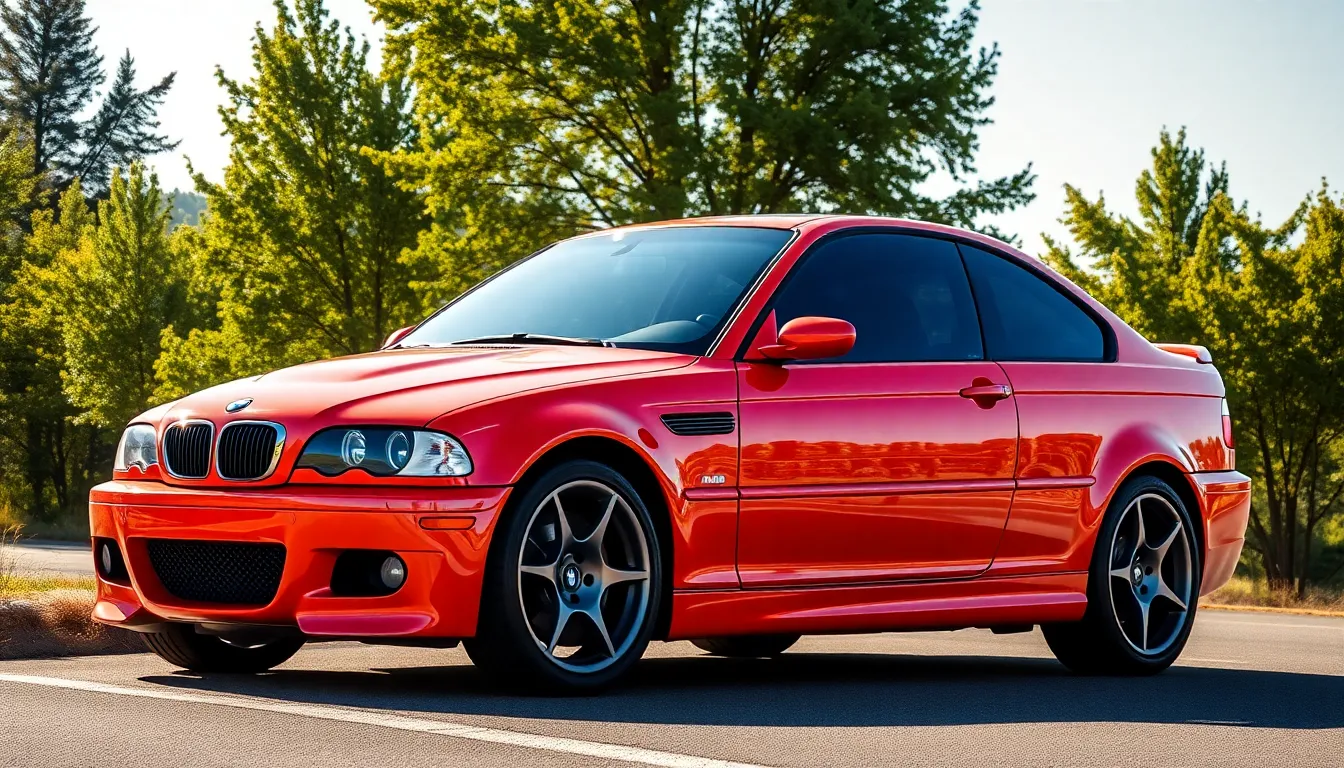
Market values for BMW E46 models vary significantly based on condition, mileage, and exact variant. Understanding ownership expenses helps potential buyers make informed decisions about this iconic platform.
Current Market Prices
Average asking prices for E46 sedans range from $8,000 to $18,000 depending on condition and maintenance history. Well-maintained 325i models typically command between $10,000 and $15,000, while higher-performance 330i variants often fetch $12,000 to $18,000 in good condition.
Performance variants demonstrate stronger value retention compared to base models. E46 M3 coupes maintain premium pricing from $25,000 to $45,000, with low-mileage examples reaching higher values. Competition Package M3 models particularly show appreciation potential.
Market demand remains steady for manual transmission models across all variants. Six-speed manual examples typically sell for 10-15% more than automatic counterparts, reflecting enthusiast preference for driver engagement.
Regional pricing variations affect market values significantly. West Coast and Northeast markets show higher average prices, while Midwest and Southeast regions offer more affordable options for budget-conscious buyers.
| Model Variant | Price Range | Transmission Premium |
|---|---|---|
| 325i Sedan | $8,000-$15,000 | 10-12% |
| 330i Sedan | $12,000-$18,000 | 12-15% |
| 325ci Coupe | $10,000-$16,000 | 8-10% |
| M3 Coupe | $25,000-$45,000 | 15-20% |
Cost of Ownership Considerations
Annual maintenance costs typically range from $1,200 to $2,500 for well-maintained examples. Preventive maintenance schedules include oil changes every 7,500 miles, cooling system flushes every 60,000 miles, and brake fluid replacement every 24 months.
Insurance premiums vary based on model variant and driver history. Standard E46 models generally cost 15-20% more to insure than comparable vehicles, while M3 variants can increase premiums by 40-60% due to performance classification.
Fuel consumption averages 22-28 mpg for naturally aspirated models under mixed driving conditions. Highway efficiency reaches 30-32 mpg in six-cylinder variants, making daily driving costs reasonable for a performance-oriented vehicle.
Parts availability remains excellent through BMW dealerships and aftermarket suppliers. OEM replacement parts cost approximately 20-30% more than aftermarket alternatives, though quality differences justify premium pricing for critical components.
Common repair expenses include cooling system overhauls ($800-$1,500), window regulator replacements ($300-$500 per side), and control arm bushing renewals ($400-$800). VANOS system repairs range from $500 to $1,200 depending on component failure severity.
Labor rates at BMW specialists typically run $100-$150 per hour, while independent shops charge $80-$120 hourly. DIY maintenance capabilities significantly reduce ownership costs for mechanically inclined owners.
Comparison with Competitors
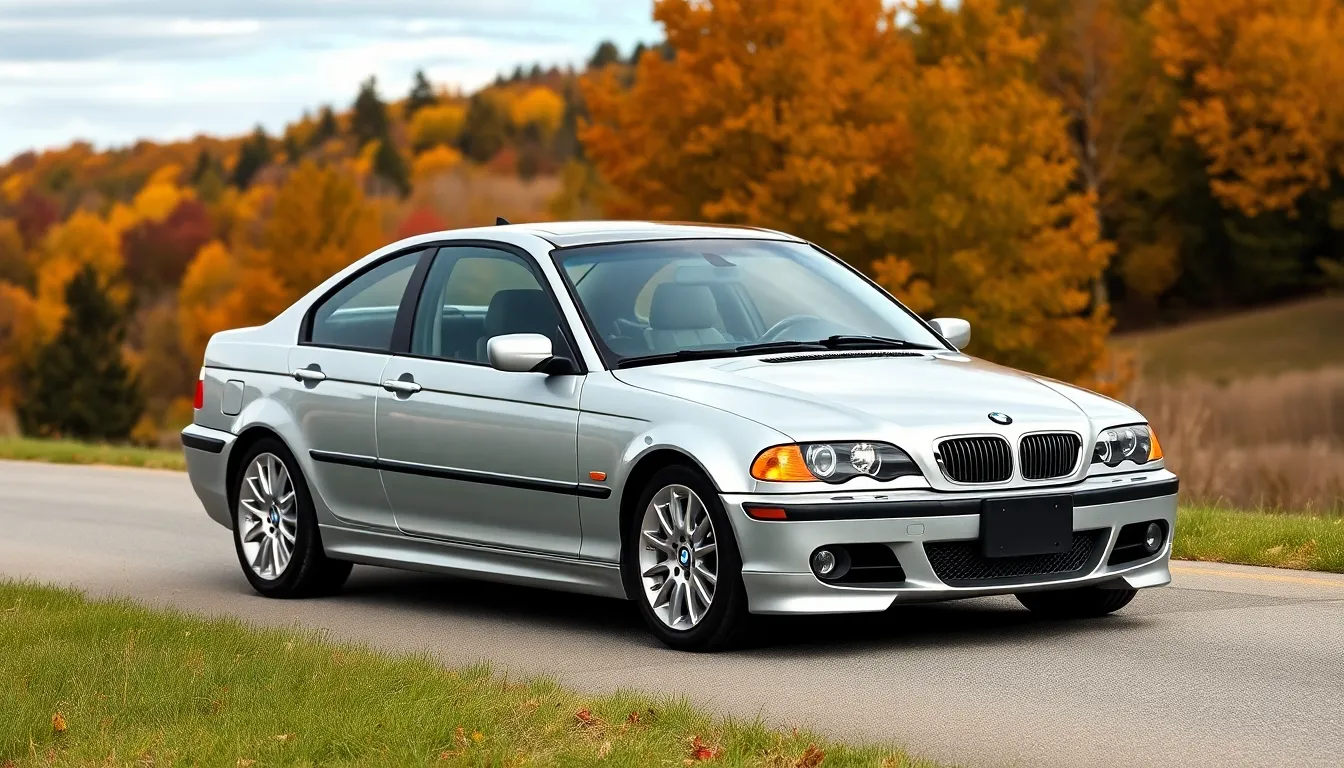
The E46 generation faced intense competition from both BMW’s own predecessor and contemporary luxury sports sedans. We analyze how the E46 distinguished itself against established rivals while building on BMW’s own engineering foundation.
BMW E36 vs. E46
BMW’s E36 platform established the foundation that the E46 refined into automotive excellence. The E46 introduced important weight reduction measures while increasing structural rigidity by 70% compared to the E36 chassis. Dimensional improvements included a 2.8-inch longer wheelbase and 1.1 inches of additional width, creating more interior space without compromising handling dynamics.
Suspension technology advanced considerably between generations with the E46 featuring aluminum components and revised geometry. The E36’s trailing arm rear suspension gave way to the E46’s sophisticated multi-link system, reducing unsprung weight and improving wheel control. Steering precision improved through the adoption of rack-and-pinion systems across all E46 variants, replacing the recirculating ball setup found in some E36 models.
Engine offerings expanded dramatically in the E46 lineup compared to the E36’s more limited selection. The E46 introduced the M54 engine family in 2000, delivering increased power output and improved fuel efficiency. Performance comparisons show the E46 330i producing 231 horsepower versus the E36 328i’s 193 horsepower output.
Build quality improvements included enhanced corrosion protection and more durable interior materials. The E46’s galvanized body panels addressed rust concerns that affected E36 models in harsh climates. Interior fit and finish received upgrades through improved plastics and more robust electrical components.
Contemporary Rivals from Audi and Mercedes
Audi’s B6 A4 generation competed directly with the E46 throughout the early 2000s marketplace. The A4’s Quattro all-wheel drive system provided traction advantages in adverse conditions, while the E46’s rear-wheel drive configuration delivered superior handling balance on dry pavement. Performance comparisons between the A4 3.0 V6 and E46 330i showed similar power outputs, with the BMW achieving faster acceleration times.
Mercedes-Benz C-Class W203 generation offered traditional luxury appointments but couldn’t match the E46’s ever-changing capabilities. The C320’s V6 engine produced 215 horsepower compared to the E46 330i’s 231 horsepower output. Mercedes focused on ride comfort while BMW prioritized handling precision, creating distinct character differences between these German competitors.
| Model | Horsepower | 0-60 mph | Base MSRP (2003) |
|---|---|---|---|
| BMW E46 330i | 231 hp | 5.9 seconds | $31,995 |
| Audi B6 A4 3.0 | 220 hp | 6.4 seconds | $29,990 |
| Mercedes C320 | 215 hp | 6.9 seconds | $32,320 |
Lexus IS300 emerged as an unexpected competitor with its Toyota 2JZ inline-six engine producing 215 horsepower. The IS300’s reliability reputation appealed to buyers seeking sports sedan performance without European maintenance costs. But, the E46’s superior chassis dynamics and transmission options maintained BMW’s competitive edge.
Market positioning strategies differed significantly among these competitors during the E46’s production years. Audi emphasized technology features and all-weather capability, Mercedes promoted luxury and prestige, while BMW marketed pure driving enjoyment and performance. These positioning differences allowed the E46 to capture buyers prioritizing handling dynamics and driver engagement over competing attributes.
Conclusion
The BMW E46 remains a benchmark for automotive excellence that we continue to celebrate today. Its perfect blend of driving dynamics reliability and timeless design creates an ownership experience that few vehicles can match. Whether you’re drawn to its exceptional handling or impressed by its engineering heritage the E46 delivers on every front.
We believe the E46 represents one of BMW’s finest achievements – a car that successfully bridged the gap between analog driving purity and modern refinement. For enthusiasts seeking an authentic BMW experience at an accessible price point the E46 stands as our top recommendation.
The lasting appeal of this platform speaks volumes about BMW’s commitment to creating driver-focused vehicles. As values stabilize and well-maintained examples become increasingly sought after we expect the E46’s legacy to endure for generations of driving enthusiasts.
Frequently Asked Questions
What years was the BMW E46 produced?
The BMW E46 was produced from 1998 to 2006. Production began with the sedan in 1998, followed by the coupe and touring wagon in 1999, and the convertible in 2000. Over 3.3 million units were sold globally, making it one of BMW’s most successful 3 Series platforms.
What makes the BMW E46 special compared to other BMWs?
The E46 features exceptional driving dynamics with near-perfect 50/50 weight distribution, responsive handling, and a sophisticated suspension system. It transformed BMW’s reputation and set the standard for modern sports sedans, combining German engineering precision with timeless design and outstanding build quality.
What are the most common problems with the BMW E46?
Common E46 issues include cooling system component failures, faulty window regulators, VANOS system problems, worn control arm bushings, and subframe mounting point concerns. These issues can be managed with proper maintenance but require attention to prevent costly repairs.
How much does a BMW E46 cost today?
E46 sedan prices typically range from $8,000 to $18,000, depending on condition and mileage. The high-performance E46 M3 commands higher values between $25,000 and $45,000. Manual transmission variants generally retain stronger market value than automatics.
What engine options were available in the BMW E46?
The E46 offered various engines including four-cylinder M43B19 and N42B20 units, the acclaimed six-cylinder M54 engine family (featured in 325i and 330i models), and the high-performance S54B32 engine in the M3. The M54 family was introduced in 2000, enhancing performance across the lineup.
Is the BMW E46 reliable for daily driving?
Yes, the E46 demonstrates solid overall reliability when properly maintained. Regular maintenance including oil changes, coolant flushes, and inspection of timing chain tensioners is essential. While certain components require attention, proper care ensures the E46 remains dependable for daily use.
What body styles were available for the BMW E46?
The E46 was available in four body styles: sedan (4-door), coupe (2-door), touring wagon (estate), and convertible. Each variant maintained BMW’s signature characteristics while catering to different driving preferences and lifestyle needs.
How does the BMW E46 compare to its competitors?
The E46 outperformed contemporary rivals like the Audi B6 A4 and Mercedes-Benz W203 C-Class through superior handling dynamics and driver engagement. While competitors offered advantages like Audi’s all-wheel drive or Mercedes’ luxury focus, the E46 distinguished itself with exceptional driving experience.

